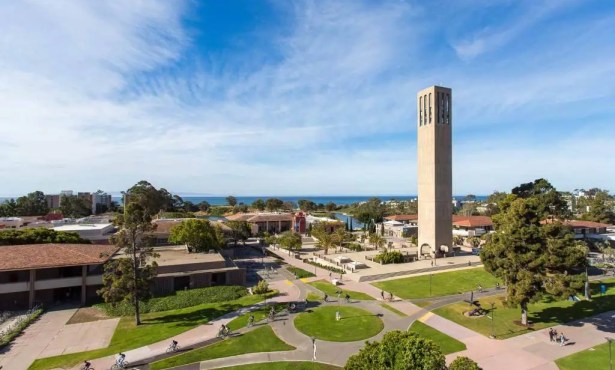When two or more psychological biases combine, the effect can snowball.
That’s the general idea behind the “Lollapalooza Effect,” a term coined by Berkshire-Hathaway vice-chairman Charlie Munger (“Warren Buffet’s right-hand man”) during a 1995 speech at Harvard. For instance, the fervor at Tupperware parties or open-cry auctions might spur you to pay more than you would in a store.

A version of it might also apply to comments below stories on the Internet.
Take, for example, the March 24 story in The Santa Barbara Independent about Munger’s offer of $200 million to UCSB for new student dorms. The comments begin with questions about the wisdom of spending money on dorms when it might be better spent on education and then snowball until Munger sounds like an evil usurper. It’s a quick trip from benefactor to bad guy.
That’s not to say the commenters don’t have some valid concerns. Key among them: No windows?
That’s right. At a UC Board of Regents meeting announcing the offer, the billionaire noted “one huge catch.” Instead of windows, said the Independent story, dorm rooms would feature “artificial portholes” like those in Disney cruise ships, where, in Munger’s words, “starfish come in and wink at your children.”
That was red meat for the comment hounds, one remarking that windowless buildings are also known as prisons.
It’s not Munger’s first dance to this tune. He gave $100 million to the University of Michigan for dorms (plus $10 million for fellowships) and a commenter wrote, “It looks like bunker [sic] … no windows except common area. Poor students will develop vitamin D deficiency!” Another: “The donor’s money would be better used funding students and faculty, but he apparently needs to have his name on a building.”
Munger’s $43.5 million gift to Stanford in 2004 also got some rough handling in a review of campus architecture seven years later. Recent construction has delivered “a branded veneer of sandy masonry that mocks the robust depth of Stanford’s best structures,” wrote the San Francisco Chronicle’s architecture critic John King. “The biggest culprit — literally — is Munger Graduate Residence, a cluster of five apartment buildings … In and of themselves, the Munger Five aren’t bad; you can imagine the quintet being pointed to with pride in aspirational corners of Orange County. But this is architecture as stage set, designed to look good as long as you don’t look too close. Even the green of the inner lawns is composed of artificial turf.”
What Munger himself says he wants is to lighten his wallet as he nears checkout. “I won’t need it where I’m going,” the 92-year-old told the Omaha World-Herald in 2013. (FYI, a note beneath that story said, “The Omaha World-Herald Co. is owned by Berkshire-Hathaway Inc.”)
“I’m deliberately taking my net worth down,” Munger said. “If it’s not below a billion, it soon will be.” That was before his gift of $65 million for a visiting scientists’ residence at UCSB’s Kavli Institute for Theoretical Physics, and after his gifts of $20 million and then $110 million to Michigan, $43.5 million to Stanford University, $38.5 million to San Marino’s Huntington Library, Art Collections, and Botanical Gardens (education and visitor center), and $1.9 million to Marlborough School in Los Angeles (athletic center), among others.
Efforts to reach Munger for comments, such as why the window ban, were unsuccessful.
UCSB concerns aren’t limited to windowless winking starfish. There’s also the friction between two large tectonic plates in Isla Vista: overcrowding vs. overdevelopment. Back to the commenters: “Accept the gift,” wrote one. “Students live 4 people in a converted garage in Isla Vista. And you think their concern is windows?” Wrote another, “Mr. Munger, please take your money elsewhere and help destroy some other community. Santa Barbara is already dying a slow death from the 65,000 students here. We all need to start using more water. It may be the only way to stop all this development.”
At present, the campus attitude toward the Munger money is “a general feeling of skepticism,” according to Dr. Glenn Beltz, associate dean of engineering. Choosing his words carefully, he said the “most sensible” use of money, when it comes from the state, is advancing education, but when it comes from a “generous donor,” the university has to be “sensitive to what he wants to donate it for.”
I sought a comment from UCSB’s vice chancellor and campus architect but was directed to Andrea Estrada, director of news and media relations, who provided another circumspect statement, which began, “We are inspired by Mr. Munger’s generosity to our campus and by his vision for providing innovative housing for our students. We continue to discuss the concept of the project, which is in its early stages.”
It begins to feel like the university has been offered a nice barrel of nitroglycerine. Who can blame them for tiptoeing around it? If there’s an opposite of the Lollapalooza Effect, this might be it.
Doronophobia maybe. The fear of opening gifts.
Find all of our Munger Dorm stories at independent.com/munger-dorm.
Support the Santa Barbara Independent through a long-term or a single contribution.



